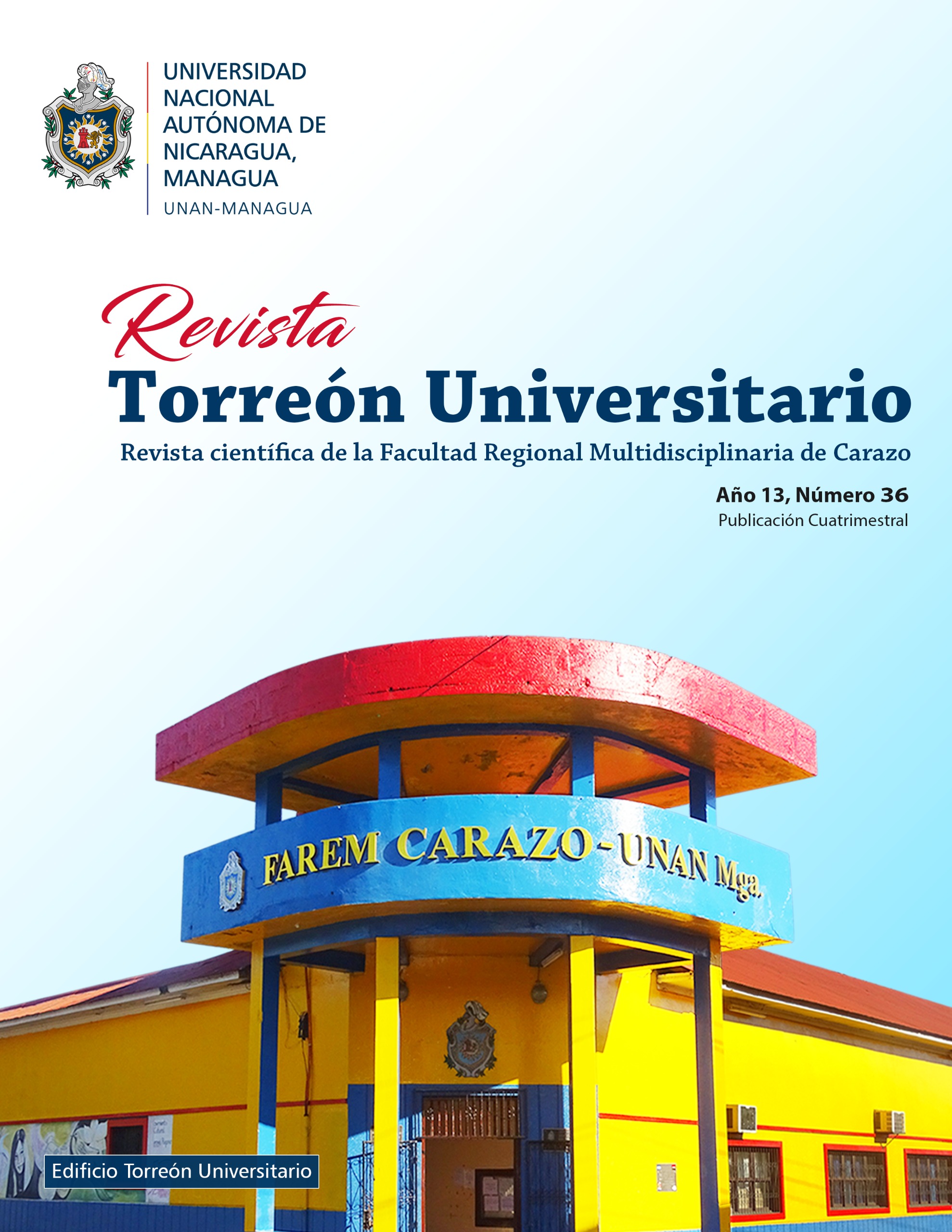Evidence-based psychotherapeutic approach to Borderline Personality Disorder: Transference Focused Therapy
DOI:
https://doi.org/10.5377/rtu.v13i36.17621Keywords:
Borderline Personality Disorder, Transference-Focused Psychotherapy, Psychodynamic psychotherapyAbstract
Borderline Personality Disorder consists in a pattern of instability in interpersonal relationships, identity, affectivity, and impulsivity in various areas, which begins in early adulthood. In the treatment of this personality disorder, Transference-Focused Psychotherapy (TFP) is one of the main forms of contemporary psychotherapeutic approach and with empirical evidence. It is a psychodynamic therapy that focuses on improving patients' understanding of their unconscious motives and feelings that cause symptoms, and aims to expose and resolve intra-psychic conflicts. In structural terms, TFP has the general objective that the patient manages to function at a neurotic level of personality organization (NPO), with preserved reality testing, the predominance of defensive operations around repression, and an integrated identity, developing coherent and three-dimensional representations of oneself and of others, which would manifest itself in the reduction of symptoms, identity integration and reintegration into intimate relationships.
Downloads
References
American Psychiatric Association. (1980). Diagnostic and Statistical Manual of Mental Disorders (3rd ed.). Washington DC: American Psychiatric Association.
Asociación Americana de Psiquiatría (APA). (2014). Manual diagnóstico y estadístico de los trastornos mentales (DSM 5). Arlington: Editorial Panamericana.
Barlow, D. (Ed.). (2021). Clinical handbook of psychological disorders, sixth edition: A step-by-step treatment manual. ProQuest Ebook Central.
Behn, A. y Fischer, C. (06 de junio 2021). Mitos y realidades sobre el Trastorno de Personalidad Límite. Ciper. Recuperado el 6 de junio 2021 de https://www.ciperchile.cl/2021/01/15/mitos-y-realidades-sobre-el-trastorno-de-personalidad-limite/
Clarkin, J., Yeomans, F. & Kernberg, O. (2006). Psychotherapy for borderline personality: Focusing on object relations. Washington, DC: American Psychiatric Publishing.
Clarkin, J., Levy, K., Lenzenweger, M., & Kernberg, O. (2007). Evaluating three treatments for borderline personality disorder: A multiwave study. American Journal of Psychiatry, 164, 922–928.
Crowell, S., Beauchaine, T., & Linehan, M. (2009). A biosocial developmental model of borderline personality: Elaborating and extending Linehan's theory. Psychological bulletin, 135(3), 495–510. https://doi.org/10.1037/a0015616
Foelsch et al. (2015). Tratamiento para la Identidad del Adolescente (AIT). México D.F.: Editorial El Manual Moderno.
Gabbard, G. O. (2014). Psychodynamic psychiatry in clinical practice (fifth edition). Washington D.C.: American Psychiatric Pub.
Gabbard, G. O. (2017). Psychodynamic psychiatry in clinical practice (special edition). Washington D.C.: American Psychiatric Pub.
Gunderson, J. G., Herpertz, S. C., Skodol, A. E., Torgersen, S., & Zanarini, M. C. (2018). Borderline personality disorder. Nature reviews. Disease primers, 4, 18029. https://doi.org/10.1038/nrdp.2018.29
Kernberg, O. (1987). Trastornos graves de personalidad. Estrategias psicoterapéuticas. México DF: Editorial El Manual Moderno.
Kernberg, O., Yeomans, F., Clarkin, J., & Levy, K. (2008). Transference focused psychotherapy: overview and update. The International journal of psycho-analysis, 89 (3), 601–620. https://doi.org/10.1111/j.1745-8315.2008.00046.x
Labbé, N., Castillo, R., Steiner, V. y Careaga, C. (2020). Diagnóstico de la Organización de la personalidad: Una actualización teórico-empírica de la propuesta de Otto F. Kernberg. Revista chilena de neuro-psiquiatría, 58(4), 372-383.
Laurenssen, E., Hutsebaut, J., Feenstra, D. et al. (2013). Diagnosis of personality disorders in adolescents: a study among psychologists. Child Adolesc Psychiatry Ment Health 7, 3. https://doi.org/10.1186/1753-2000-7-3
Lingiardi, V., & McWilliams, N. (2017). The Psychodynamic Diagnostic Manual–2nd edition (PDM-2). New York: The Guilford Press.
Stoffers-Winterling, J. M., Voellm, B. A., Rücker, G., Timmer, A., Huband, N., & Lieb, K. (2012). Psychological therapies for people with borderline personality disorder. Cochrane Database of Systematic Reviews, (8).
Videler, A., Hutsebaut, J., Schulkens, J., Sobczak, S., & Van Alphen, S. (2019). A life span perspective on borderline personality disorder. Current psychiatry reports, 21(7), 51. doi: 10.1007/s11920-019-1040-1
Wall, K., Kerr, S., & Sharp, C. (2020). Barriers to care for adolescents with borderline personality disorder. Current Opinion in Psychology. (37), 54-60. https://doi.org/10.1016/j.copsyc.2020.07.028
World Health Organization (WHO). (1992). The ICD 10 Classification of Mental and Behavioural Disorders. Geneva: WHO.
Published
How to Cite
Issue
Section
License
Copyright (c) 2024 Universidad Nacional Autónoma de Nicaragua-Managua

This work is licensed under a Creative Commons Attribution-NonCommercial-NoDerivatives 4.0 International License.
The authors who publish in this journal agree to the following terms.
- The author or authors of the articles, essays or research grant the National Autonomous University of Nicaragua, Managua (UNAN-Managua) the editing rights (copyright) of the submitted work, therefore the University has the exclusive right to publish the article for the entire copyright period.
- These copyrights/authors authorize Torreón Universitario Magazine and the University to edit and disseminate/publish the article in said Magazine, including printed and electronic reproduction, storage, retrieval and any other type of publication, and sources of secondary information as services. of summaries and databases, they also empower it to protect the article against unauthorized use for dissemination by printed or electronic media (PDF, HTML, EPUB, XML or others).
License for use of content
The magazine uses the Creative Commons Attribution-NonCommercial-NoDerivs 4.0 International License.
Under this statement:

This journal is licensed under a Creative Commons Attribution-NonCommercial-NoDerivatives 4.0 International License. It can be copied, distributed and transmitted publicly as long as the author and source are cited (Revista Torreón Universitario), it should not be modified or used for any commercial purpose. The full license can be found at http://creativecommons.org/licenses/by-nc-nd/4.0/.



